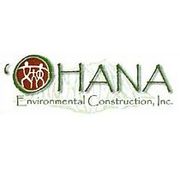What is Considered Hazardous Waste?

When you think of hazardous waste, you think of sludge-producing chemical plants. However, even the most well-maintained home can have dangerous waste that needs to be removed. Knowing what’s toxic and how to remove it will make hazardous waste management easier and your home safer.
A Guide to Hazardous Waste
What is Hazardous Waste?
Hazardous waste is defined as anything that has harmful properties that can affect people or their environment. The waste usually begins as a solid. Over time, some remain solid or take on a different form. These forms include liquid, gas, or sludge.
What Are Examples of Hazardous Waste?
 Many home products are hazardous and need to be disposed of properly to keep your family and the environment safe.
Many home products are hazardous and need to be disposed of properly to keep your family and the environment safe.
Waste products are found throughout the home. Most of them are either flammable under certain conditions or are corrosive.
Your car is a producer of waste, including the materials that keep it running. This includes batteries, brake fluid, engine cleaners, and degreasers, automotive oil, and the antifreeze. Both diesel fuel and gasoline are also hazardous waste.
If you have an outdoor garden or grassy area, the herbicides, weed killers, and pesticides you use are toxic and should be disposed of carefully.
Swimming in the pool and barbecuing are a fun way to spend the day. However, the chlorine that keeps your pool clean is also corrosive. Don’t open your grill’s nearly empty propane tanks to let the remaining gas leak, as it’s flammable. You can’t place it on the curb for recycling for the same reason.
While you may use ammonia and bleach to keep your home clean, they’re also examples of hazardous waste, and with oil-based paint and paint thinners.
Televisions and computers contain materials that should be disposed of by professionals.
How Do You Contain & Remove Hazardous Waste?
Successful hazardous waste management at home can be achieved with proper removal. Check product labels for storage and disposal directions. Some forms of waste, including solids, don’t have removal instructions. If that’s the case, reach out to a professional waste elimination team for assistance.
Don’t store hazardous liquids like nail polish remover, chlorine, or paint in food containers. The chemicals in these fluids might cause the container to degrade over time. When dealing with corroding containers, call a waste management team to remove them safely.
Never mix remaining hazardous waste materials, as they may have a negative reaction when placed together.
Hazardous waste should be removed quickly and with professional care. Ohana Environmental Construction combines the experience needed to remove mold, asbestos, lead paint, and environmental hazards with the care required to not disturb your home. Their hazardous waste management team is fully insured and accredited by the Better Business Bureau®. If you’re in the Honolulu, HI, area, they’re available 24/7 at (808) 836-6955. For more information on their services, including water damage removal and home inspections, visit their website.
About the Business
Have a question? Ask the experts!
Send your question

